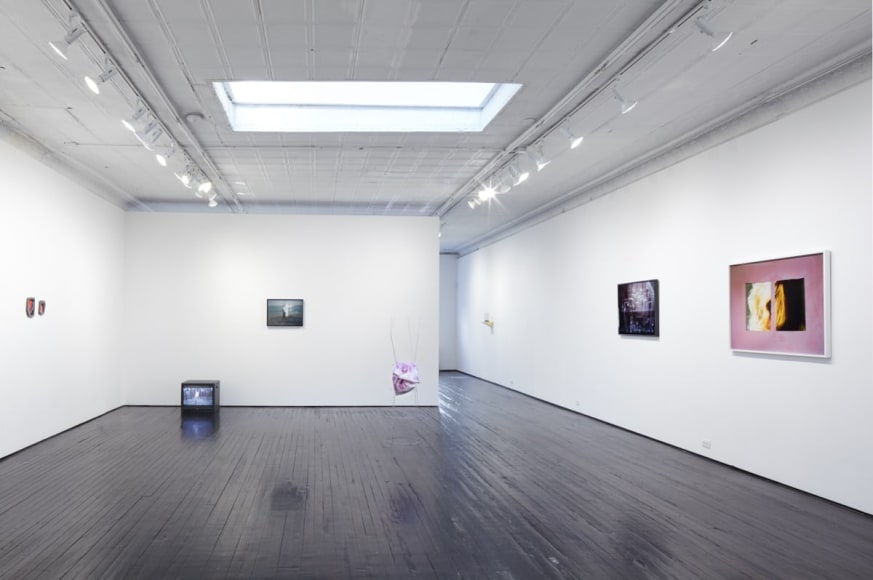Jack Hanley Gallery is pleased to present Ghosts, a group exhibition featuring works by Cortney Andrews, Hervé Guibert, Elizabeth Jaeger, Bennet Schlesinger, Martin Soto Climent, and Quay Quinn Wolf. The works in the show materialize the presence of absence and rekindle spirits from the past that linger in personal memories, art history and cultural rituals.
The intimate black and white photographs of writer and photographer Hervé Guibert range from still lifes, and interiors to images of lovers, friends and self portraits. Deeply personal, each of the photos manifests his passion, relationships, fears and losses in an insatiable curiosity for photography. During his short life of 36 years, overshadowed by the AIDS crisis of the 80s and 90s, his photographs prevented him and his friends from disappearing and became monuments of momentariness.
In Elizabeth Jaeger’s series of ‘Denudes’, art history’s iconic venuses, reclining nudes and odalisques levitate in darkness, deprived of their limbs and faces. Erased through thick pencil strokes, their truncated torsos emphasize the tradition of objectifying the female body while bringing to mind the subjects’ lost spirits and veiled identities. Similar to Jaeger, Cortney Andrews’ uncanny video “Holding” addresses female archetypes through a performative gesture. Dressed in a white gown, Andrews hangs herself from a tree, quivering involuntarily. The image suggests haunting cultural and historical references to the female body, such as hysteria and witch trials. Her photographs possess an equal tension. Caught in between two sides, they carry her personal ghosts that hover over the present. Bennet Schlesinger’s Possible Windows capture the remnants of fluorescent light in meta reflective vignettes. Drawing from the imagery of his personal quotidian observations, the windows hold memories manifested in spaces and lights from the past.
Martin Soto Climent’s works are drawn from the spiritual transfiguration of the ancient Mesoamerican sweat lodge rituals known as Temazcal. For several centuries, the ceremonies have been held in stone igloos, using charred, burnt wood and the circulation of vapors to cleanse the spirit through shamanic practices. In relic-like objects, Soto Climent gives concrete form to the ephemerality of the transitioning spirits. Quay Quinn Wolf’s sculptural works refer to the better known ceremony of funerals. Growing up with his mother studying towards a degree in mortuary science, he has been exposed to the customs of human preservation and the furnishing of funerals at an early age. Red rose and lily stained satin, velvet, a plant support stand, and a blazer without a body all explore the relationship between archival and non-archival materials while addressing the mourning and loss of a loved one.
For more information please contact Silke Lindner-Sutti at silke@jackhanley.com










